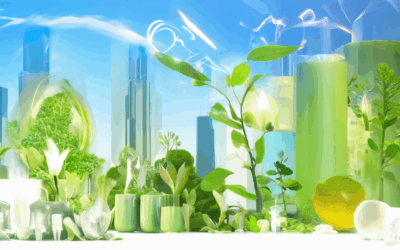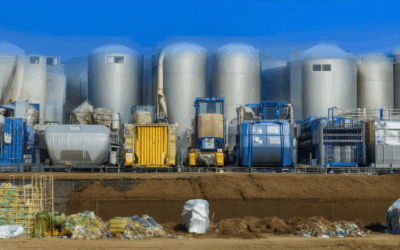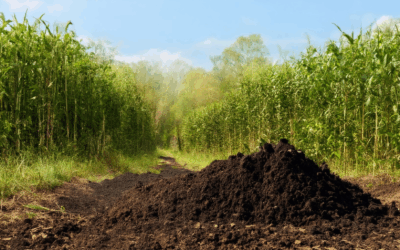Sustainable urban agriculture is revolutionizing the way cities approach food production, offering a greener, more efficient alternative to traditional farming methods. As urbanization continues to accelerate, the demand for locally-grown, eco-conscious foods has never been higher, making sustainable urban agriculture a cornerstone of modern food systems. This practice not only reduces environmental impact but also fosters community engagement and self-sufficiency in urban settings. From rooftop gardens to vertical farms, sustainable urban agriculture is proving to be a viable solution to feeding growing populations while preserving natural resources. However, it’s not without its challenges—issues like limited space, water scarcity, and zoning laws complicate the adoption of these practices. Despite these hurdles, the potential for sustainable urban agriculture to transform cities remains immense, offering a pathway toward a more resilient and environmentally friendly future. By exploring real-world examples, addressing key challenges, and uncovering new opportunities, this article delves into the evolving landscape of sustainable urban agriculture in 2022.
Key Takeaways
– Embrace sustainable farming practices that enhance environmental health and economic viability.
– Integrate organic farming, agroforestry, regroving, and permaculture for comprehensive sustainability.
– Tackle challenges through supportive policies, innovative technology, education, and market strategies.
– Adopt eco-friendly practices like integrated crop-livestock systems to boost productivity and reduce environmental harm.
– Utilize certifications to verify sustainable practices and uphold high standards.
– Implement precision agriculture tools to optimize resources and improve sustainability outcomes.
– Prioritize integrated systems that balance environmental, economic, and social benefits for long-term success.

How is Urban Agriculture Sustainable?
Urban agriculture is sustainable through various innovative practices that minimize environmental impact while maximizing productivity. Here are the key ways urban farming contributes to sustainability:
- Water Efficiency: Urban farms often reuse rainwater, graywater, and even wastewater, significantly reducing the demand for freshwater resources.
- Organic Practices: Many urban farms opt for organic farming methods, avoiding synthetic pesticides and fertilizers, which protect soil health and reduce contamination risks.
- Space-Saving Techniques: Vertical farming, container gardening, and rooftop gardens maximize limited space while producing fresh produce locally.
- Biodiversity Support: Urban farms often incorporate native plants and pollinator habitats, contributing to local biodiversity and ecological balance.
- Waste Reduction: Composting kitchen scraps and yard waste not only enriches the soil but also reduces landfill dependency and methane emissions.
- Community Engagement: Urban farms foster social connections and education about sustainable living, promoting healthier diets and stronger community ties.
By adopting these practices, urban agriculture plays a crucial role in creating self-sufficient, eco-friendly food systems within cities. It’s a win-win for the environment and local communities, offering fresh produce while preserving natural resources and promoting sustainable living.
Examples of Urban Agriculture
- Vertical Farming: Companies like Greenery and Pterofarms utilize vertical farming techniques to grow crops in urban settings.
- Container Gardening: Many urban dwellers use recycled containers to grow herbs, vegetables, and flowers, as seen in this guide .
- Community Gardens: Cities worldwide have initiatives like Brooklyn Botanic Garden’s Community Garden Program where residents can collectively grow fruits and vegetables.
- Rooftop Farms: Projects like Rooftop Crop transform unused rooftops into productive agricultural spaces.
- Urban Beekeeping: Initiatives such as NYC Bee Project promote beekeeping in urban areas to support pollinators.
- Hydroponic and Aeroponic Systems: Companies like Bowery Farming use hydroponics to grow crops in controlled environments.
- Agri-Tourism: Establishments like Stonecrop Farms offer educational tours and farm experiences.
- Food Forests: Inspired by permaculture, projects like those from The Permaculture Institute plant edible forests in urban areas.

What is Sustainable Farming in Urban Areas Called?
Sustainable farming in urban areas is often referred to as urban agriculture . This practice involves growing crops, vegetables, fruits, and other plants within or near urban centers. Urban agriculture includes various methods such as:
- Vertical Farming : Utilizing vertical structures to grow plants, reducing land use and minimizing environmental impact.
- Container Gardening : Using containers or planter boxes to cultivate plants, which can be placed on rooftops or patios.
- Rooftop Farming : Farming on rooftops to maximize the use of available space and reduce the urban heat island effect.
- Community Gardens : Collective efforts where residents share plots or spaces to grow their own produce, fostering community engagement.
- Rainwater Harvesting : Collecting and storing rainwater for irrigation, contributing to water efficiency.
- Composting : Converting organic waste into nutrient-rich soil to support plant growth.
- Organic Farming : Practicing sustainable farming without synthetic chemicals, promoting biodiversity and ecological health.
- Smart Farming : Employing technology like sensors and data analytics to optimize resource use and increase productivity.
These practices collectively enhance urban sustainability by providing fresh produce, mitigating environmental impacts, and fostering community connections.

Sustainable Agriculture: Exploring the Most Eco-Friendly Farming Practices
Sustainable agriculture encompasses a variety of practices aimed at promoting environmental health, economic profitability, and social equity. Among the many methods, several stand out as particularly sustainable:
- Organic Farming : This practice avoids synthetic chemicals, focusing instead on natural processes to maintain soil health and biodiversity. It reduces pollution and promotes healthier crops and livestock.
- Agroforestry : By integrating trees with crops and livestock, agroforestry stabilizes soil, enhances biodiversity, and sequesters carbon, making it a highly sustainable approach.
- Regenerative Agriculture : This method focuses on rebuilding soil health through techniques like crop rotation, cover cropping, and reduced tillage. It creates a more resilient farm ecosystem.
- Permaculture : Mimicking natural ecosystems, permaculture designs gardens and farms to be self-sustaining, maximizing efficiency and minimizing resource use.
The most sustainable type of agriculture likely combines these methods, creating an integrated system that considers environmental, economic, and social factors. Certifications like USDA Organic and Fair Trade can further validate these practices, ensuring they meet high standards of sustainability.
Additionally, incorporating precision agriculture technology can optimize resource use, enhancing sustainability efforts. Overall, sustainable agriculture is not a single practice but a collection of complementary approaches that work together to promote long-term environmental and economic health.
The Main Problem of Sustainable Agriculture
Sustainable agriculture faces significant challenges in its implementation and widespread adoption. One of the primary issues is the tension between conventional agricultural practices and sustainable ones. Conventional methods, which rely heavily on synthetic inputs such as pesticides, herbicides, and artificial fertilizers, dominate many farming systems worldwide. These practices, while productive, often come at a cost to the environment, contributing to soil degradation, water contamination, and biodiversity loss.
Another major problem is the limited availability of resources such as clean water, organic fertilizers, and renewable energy. As demand for sustainable products grows, the pressure on these resources increases, potentially leading to scarcity and driving up costs. Additionally, the transition to sustainable practices requires significant investment in new technologies, infrastructure, and training, which can be a barrier for many small-scale farmers.
Market dynamics also pose a challenge. Consumer preferences often favor cheaper, more abundant conventional products, creating a barrier for sustainable farmers who may charge premium prices. Furthermore, the certification processes for sustainable agriculture can be costly and time-consuming, adding to the financial strain on producers.
The complexity of sustainable farming systems themselves is another hurdle. Integrating multiple sustainable practices such as crop rotation, cover cropping, and integrated pest management requires a deep understanding of farming systems and careful planning. Farmers may struggle with the uncertainty of returns and the learning curve associated with adopting these practices.
Finally, there is the issue of labor shortages and rising costs of labor, which can make sustainable practices more expensive compared to conventional methods. Mechanization and automation offer potential solutions, but accessing the necessary capital and expertise can be challenging for many farmers.
In summary, the main problem of sustainable agriculture lies in navigating the competing pressures of conventional practices, resource limitations, market barriers, and the complexity of implementing integrated sustainable systems. Addressing these challenges requires a multifaceted approach that includes policy support, technological innovation, education, and market incentives to facilitate the transition to more sustainable farming practices.

Most Environmentally Friendly Agriculture
The most environmentally friendly agriculture practices include organic farming, agroforestry, permaculture, and integrated crop-livestock systems. Each of these methods contributes to ecological health, biodiversity, and reduced resource use.
- Organic Farming : This practice avoids synthetic pesticides and fertilizers, promoting healthier soils and reducing water pollution. It enhances biodiversity and decreases reliance on non-renewable resources.
- Agroforestry : Combines trees with crops and livestock, improving soil fertility, controlling erosion, and providing habitats for wildlife. It enhances carbon sequestration and promotes sustainable land management.
- Permaculture : Designs agricultural systems that imitate natural ecosystems, maximizing resource efficiency and minimizing waste. It focuses on self-sufficiency and long-term soil health.
- Integrated Crop-Livestock Systems : Combines crops with animals to recycle nutrients and reduce chemical use. This approach lowers greenhouse gas emissions and enhances land productivity.
These methods collectively reduce environmental impact, promote sustainable food production, and contribute to climate resilience. They offer a pathway toward a more sustainable and eco-friendly agriculture future.




0 Comments